Soon after I got to the agreed point in Chania early in the morning, I was picked up by a coach and then together with other passengers who had paid for the excursions to Balos Beach or Elafonisi Beach I was transferred to the Kissamos Port. My excursion on this day involved a boat ride and visit to two places – Balos Beach and Gramvousa islet. The passengers who did not go on this trip continued to the southwest of Crete. The places I visited on this day are located in the far northwest of Crete. Look at the map of my travel around Crete:
Already the boat ride (we actually went on a big ship) was interesting and impressive enough to justify the excursion. Still, one needs to bear in mind that Crete is an island where there is often a (strong) wind and therefore it can easily happen that this trip is cancelled. I was lucky enough that the day was absolutely perfect – sunny and practically with no wind.
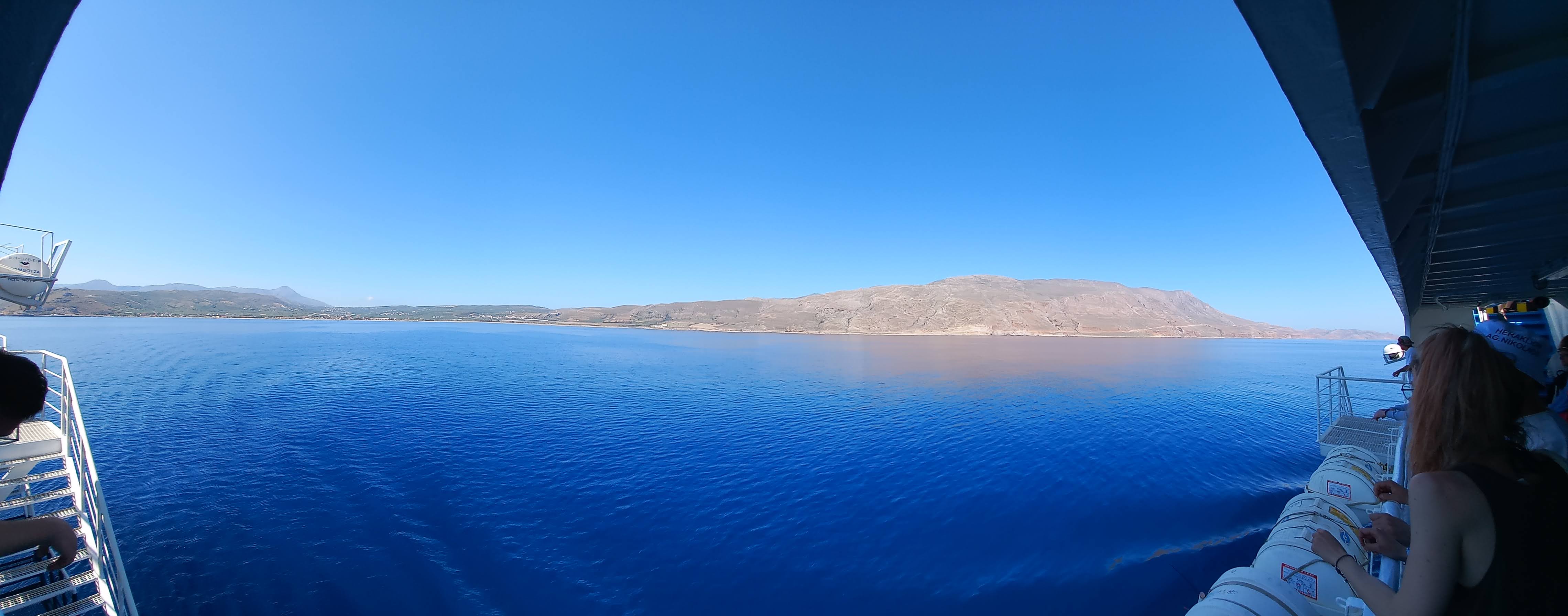 Starting with the sightseeing – the east side of Gramvousa Peninsula
Starting with the sightseeing – the east side of Gramvousa Peninsula
When I say that the trip included also a visit to islet Gramvousa, one should keep in mind that there are actually two islets called like that and that is also the name of the peninsula at the far northwest point of Crete – Gramvousa Peninsula. The previous photo shows precisely the peninsula that we sailed around, since we were heading for the west coast of Crete.
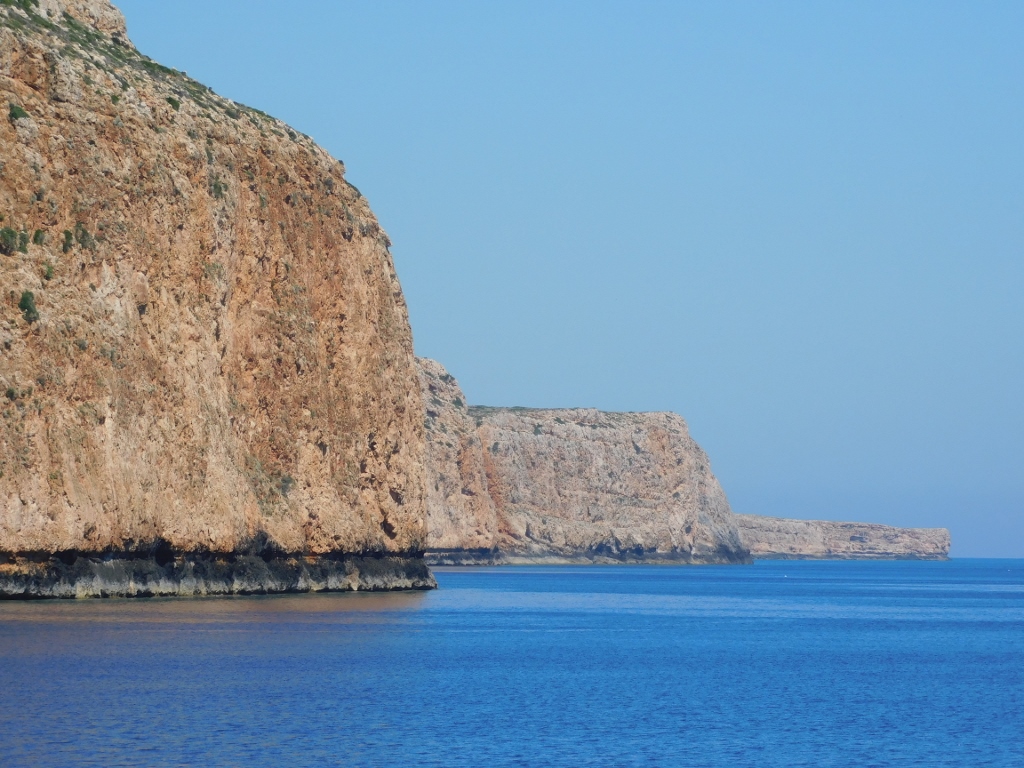 Wild and rocky Gramvousa Peninsula, a detail
Wild and rocky Gramvousa Peninsula, a detail
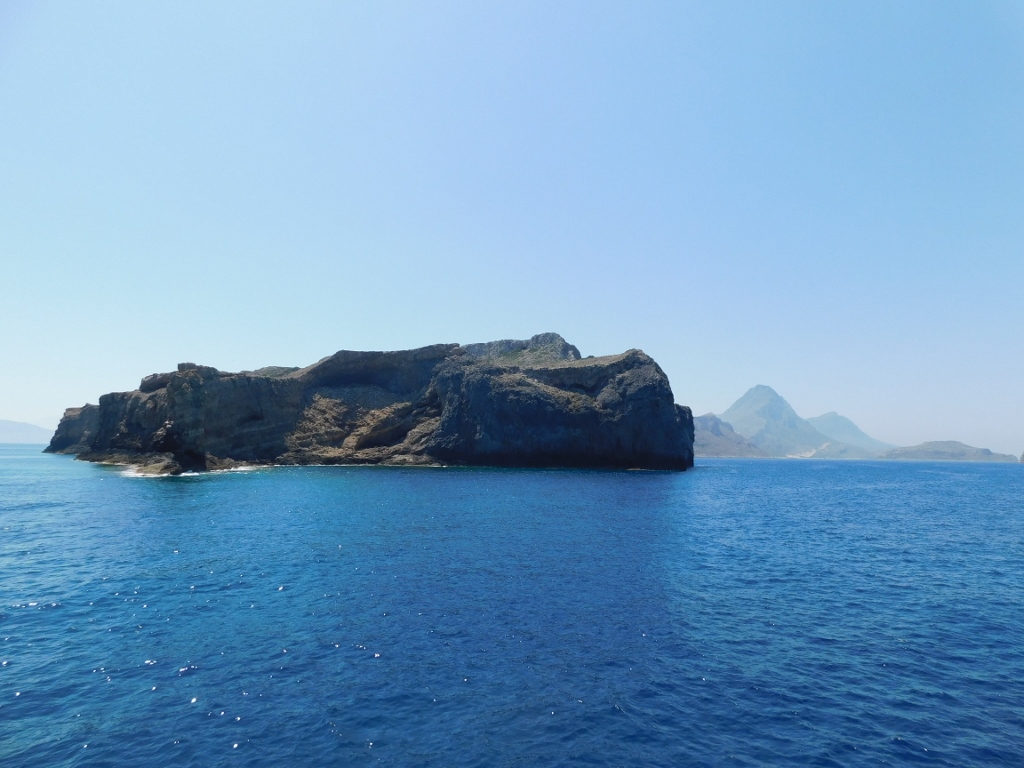 Sailing around Cape Gramvousa
Sailing around Cape Gramvousa
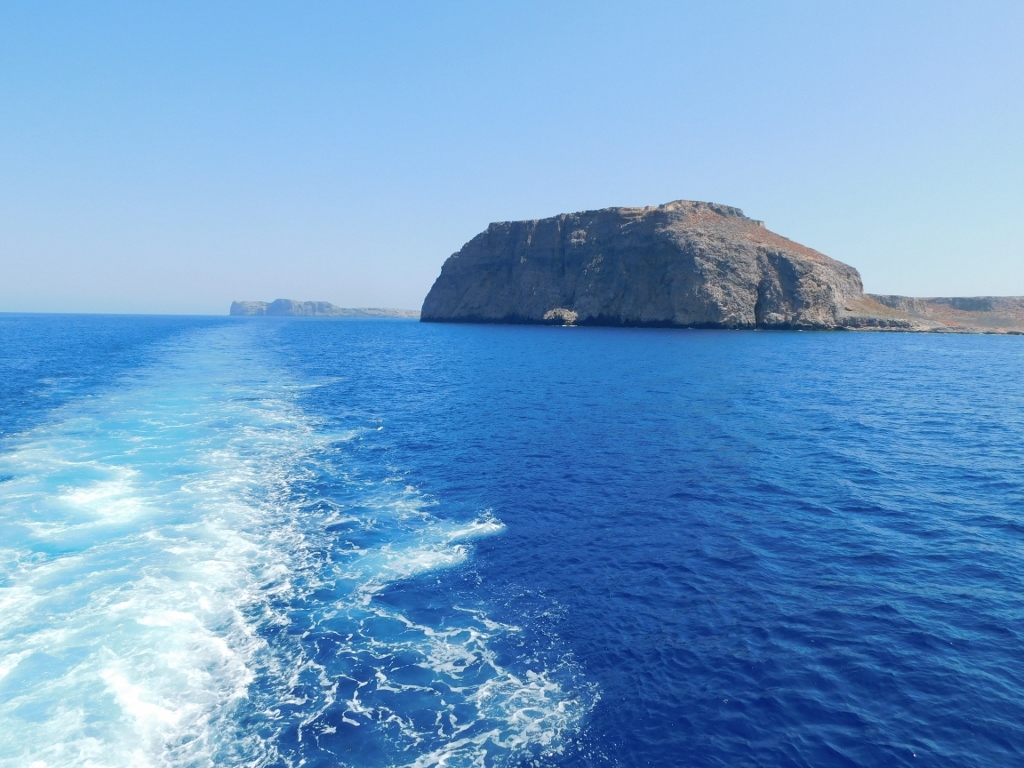 Passing by islet Imeri Gramvousa that we will visit later
Passing by islet Imeri Gramvousa that we will visit later
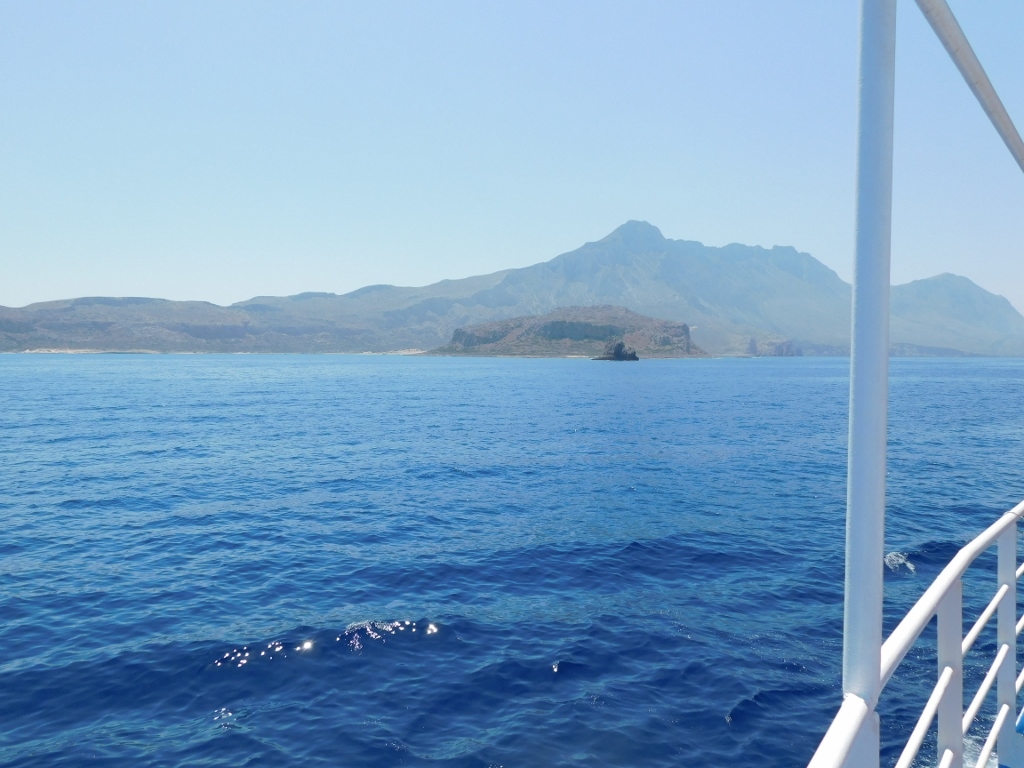 Getting closer to the destination
Getting closer to the destination
The previous photo shows Cape Tigani that is more like a wide and low truncated cone coming out of the sea. Concretely speaking, in the photo, it is the piece of land between a dark rock protruding from the sea and the high hills in the background which is in fact Gramvousa Peninsula.
The large ship I was on headed right there, to Cape Tigani, that could almost be viewed as an island. The docking was by the very shore, without a formal pier or some built structure, but with a lot of skill on the part of the captain.
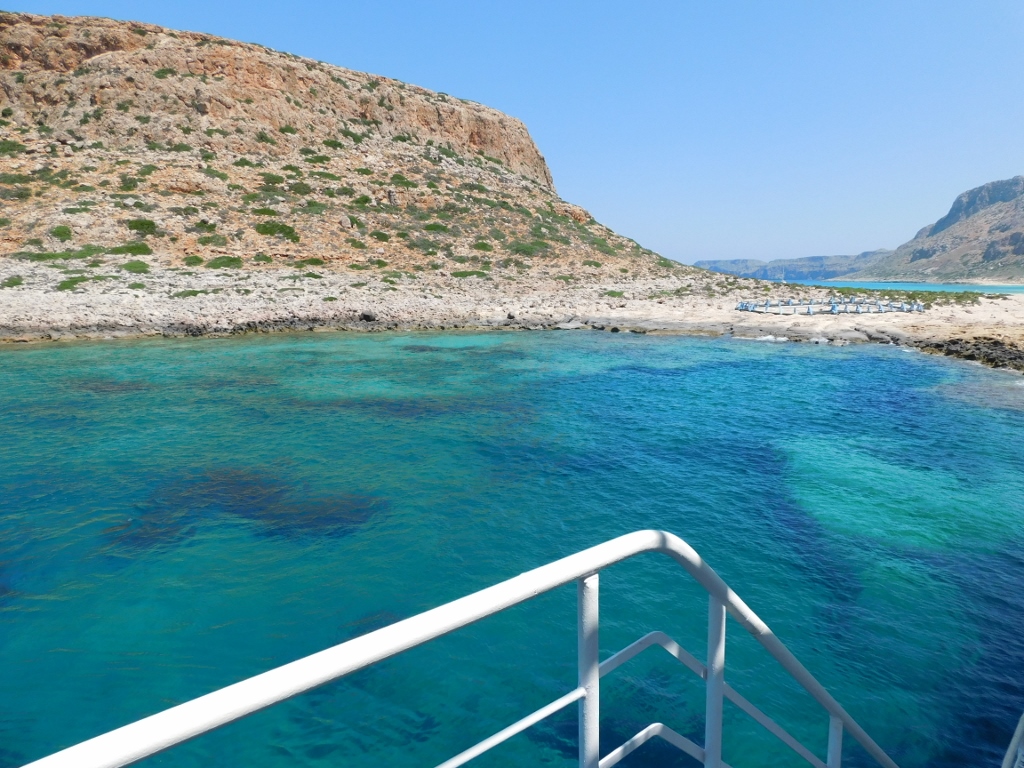 We are docking right here
We are docking right here
Once the ship docks, the visitors disembark by walking over a metal platform and then they continue onwards. The photo below shows the visitors to the left, while in the centre and right there is a low isthmus that makes Tigani a peninsula, rather than an island.
 Balos Beach area
Balos Beach area
On the one, west side of the isthmus, the water is deeper and that is where our ship docked. On the east side, there is the south end of a lagoon that has formed here. This lagoon is “cut through” by a rocky/sandy segment, a strip, and Tigani is almost linked to the mainland for the second time by that part as well. I’m saying “almost” since that strip is completely severed in one place where water from the sea enters the south zone of the lagoon. So, between the isthmus and that strip, there is the south section of the lagoon and the water in it is shallow and warm as if it were some kind of a thermal pond.
 View from the strip at the south part of the lagoon and the isthmus. On the right-hand side, on the horizon line, between two people, you can see the docked ship
View from the strip at the south part of the lagoon and the isthmus. On the right-hand side, on the horizon line, between two people, you can see the docked ship
As for the north section of the lagoon... Well, the north section of the lagoon is the reason why people love to come here and why this is considered to be one of the most beautiful beaches on Crete.
 Balos Beach, the north section of the lagoon
Balos Beach, the north section of the lagoon
From here, one can see nicely the islet of Imeri Gramvousa that we were to visit later on.
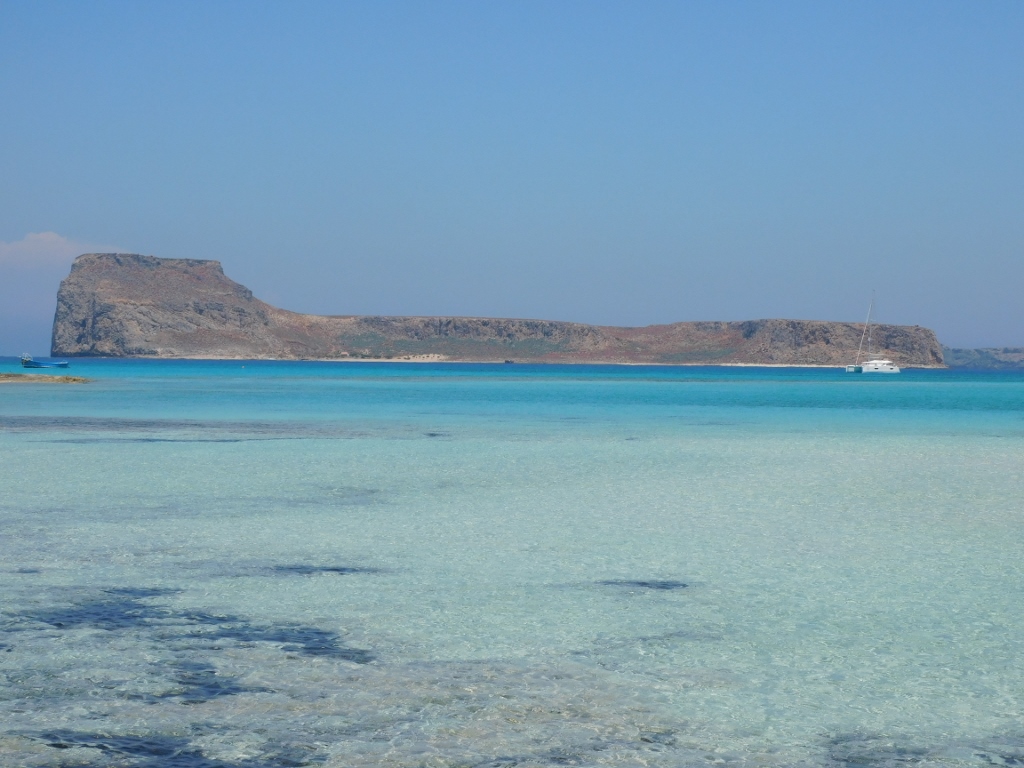 Balos Beach, the north section of the lagoon, and Imeri Gramvousa
Balos Beach, the north section of the lagoon, and Imeri Gramvousa
Still, in order to see all of this better and to understand the configuration of the terrain, one needs to move a little away from the shore and climb uphill. It is in fact possible to climb all the way to the top of the hill that rises above the coast, but I had no such ambitions. I was content even with the partial uphill climb treading over wonderful, soft sand that made the ascent somewhat difficult and yet extremely pleasant for the feet.
 Balos Beach: the south section of the lagoon is to the left and in the centre, Cape Tigani is in the background of the centre, while the north section of the lagoon is to the right
Balos Beach: the south section of the lagoon is to the left and in the centre, Cape Tigani is in the background of the centre, while the north section of the lagoon is to the right
 Balos Beach: Cape Tigani is to the left, while the north section of the lagoon and the islet Imeri Gramvousa are to the right
Balos Beach: Cape Tigani is to the left, while the north section of the lagoon and the islet Imeri Gramvousa are to the right
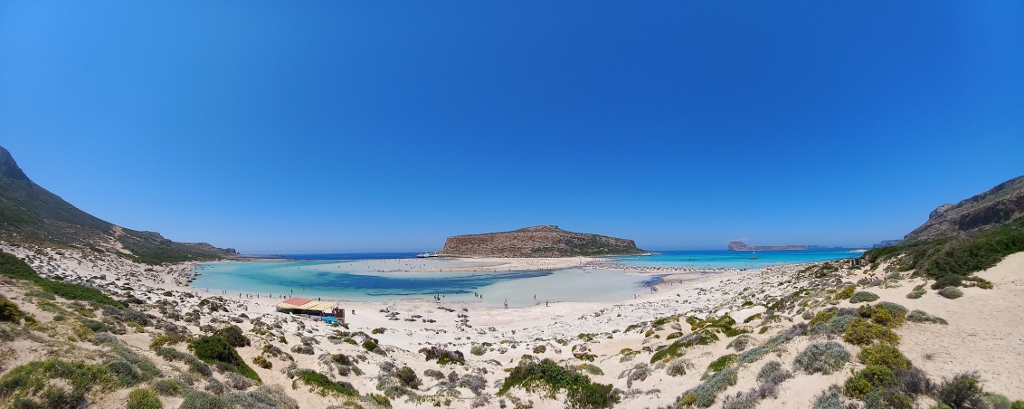 Balos Beach
Balos Beach
I did not want to climb far, since I was drawn by the beach and the wonderful colour of the water. So I started to go back to the sunloungers and along the way I walked past a very interesting structure. Perhaps it could be interesting to do what one has to do in such places with the door wide open, but I’m not sure others would appreciate it. Or perhaps nobody would pay any attention to the situation in a place like this?
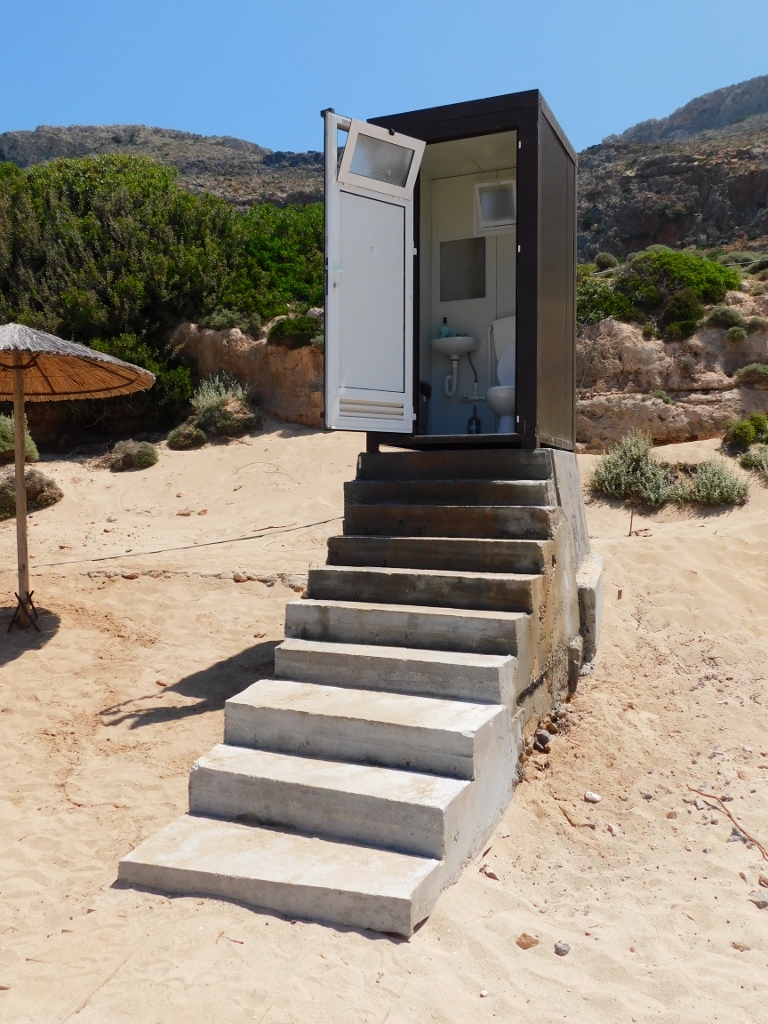 Balos Beach, a detail
Balos Beach, a detail
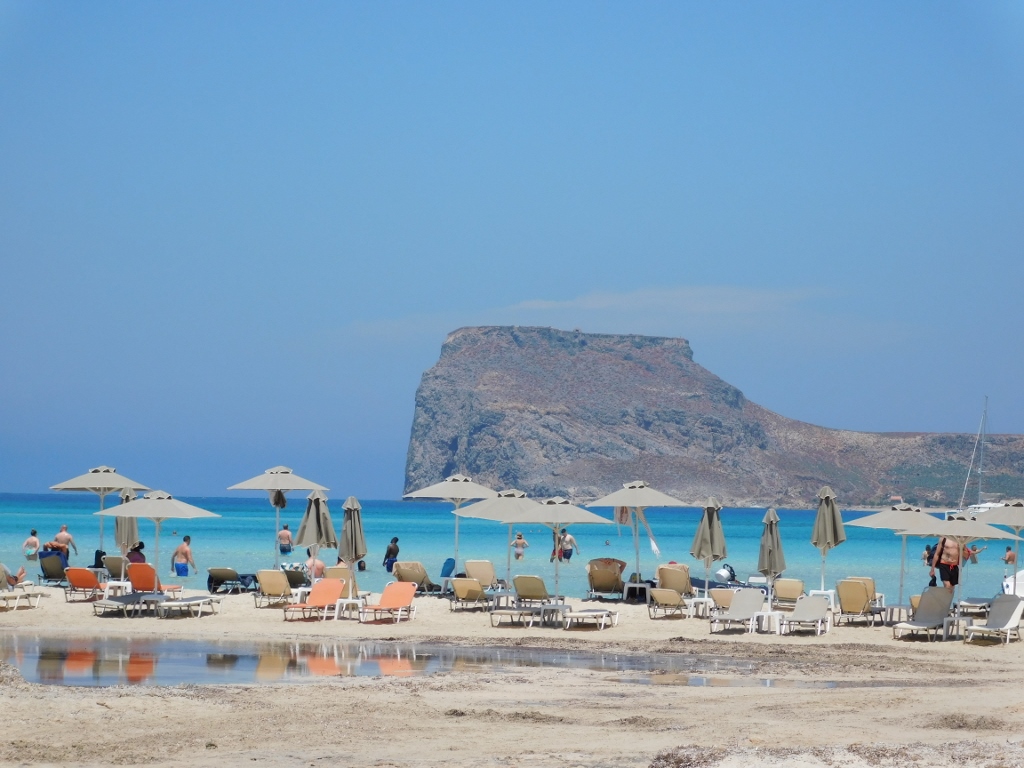 Balos Beach
Balos Beach
The sun loungers need to be rented here, but that was not a problem at all, since it was all well organised. The ship, admittedly, offered rental of parasols that could then be taken to the beach, but it was certainly more comfortable for me just to get here, rent a sun lounger and a parasol that had already been set up. All I had to do was enjoy the spectacular view.
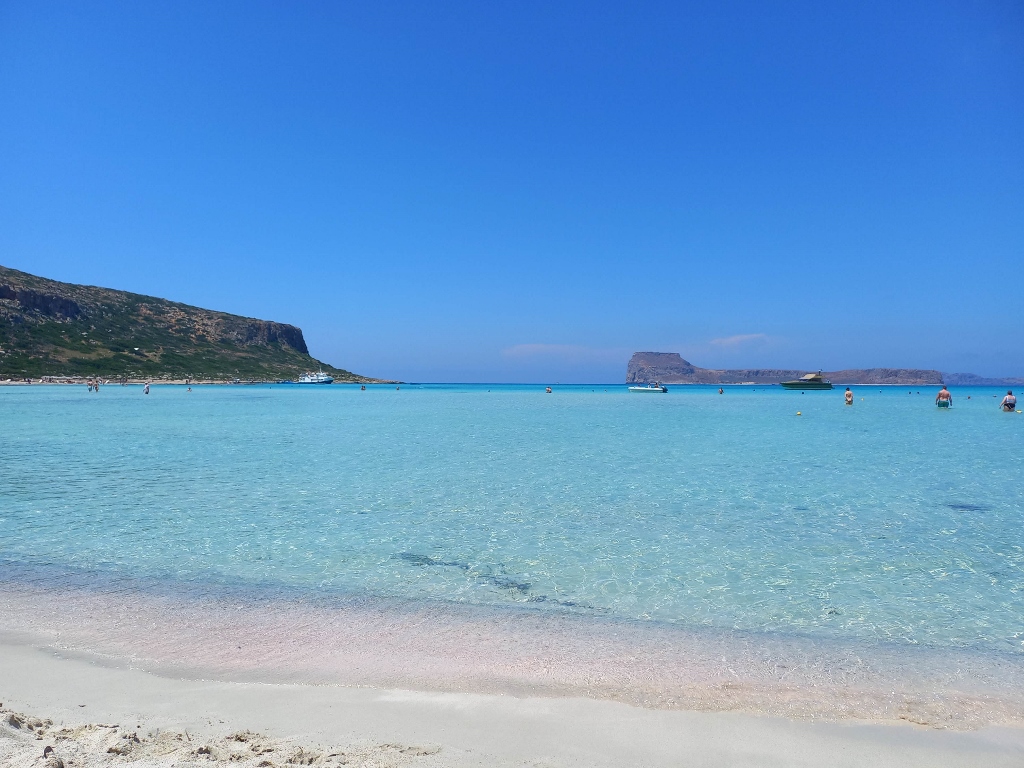 The tropics??? Oh, no. This is Crete: Balos Beach
The tropics??? Oh, no. This is Crete: Balos Beach
Needless to say, I had to enter the water right away, but there was a problem here. The water was still far to cold for me. Still, little by little, I did get in and even swam a little, but I did not stay in for too long. I spent the rest of the time, a couple of hours, by sitting/lying on the beach and enjoying the sight in front of me. That was not hard at all.
 Balos Beach
Balos Beach
After these couple of hours of intense enjoyment, I slowly headed back to the ship, but in such a way that I could still look at (and take photos of) the north part of the lagoon that I certainly found more beautiful than the south one.
 Balos Beach
Balos Beach
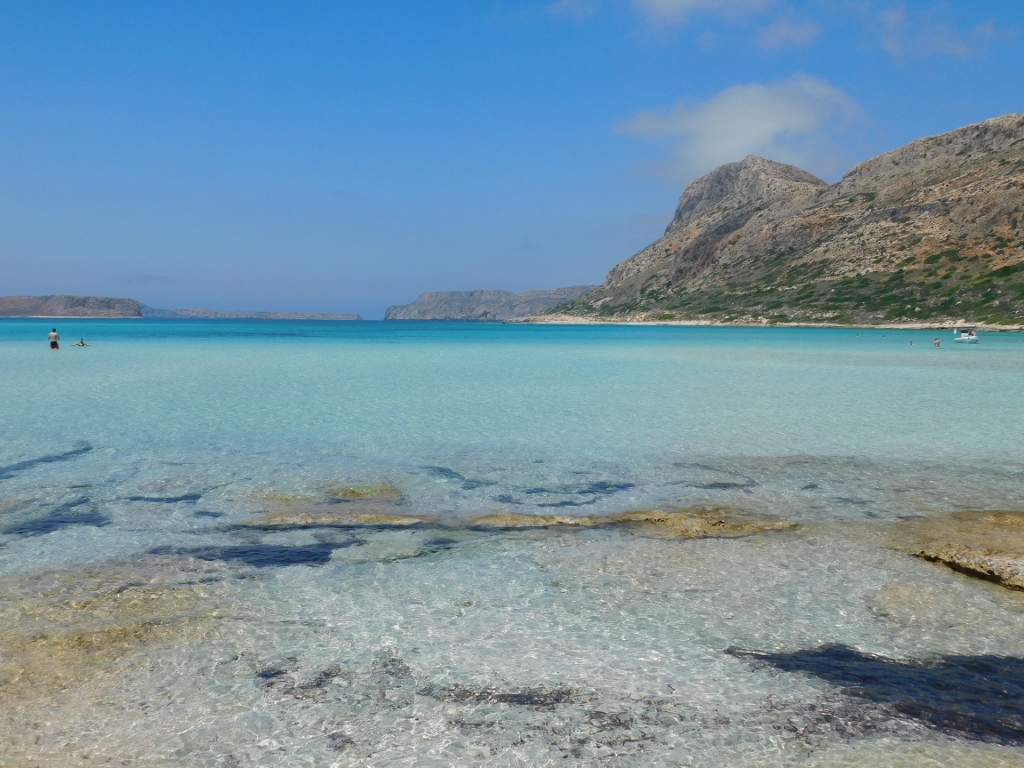 Balos Beach
Balos Beach
Still, at some point, I had to walk directly towards the ship and in line with the plan we soon continued with our trip.
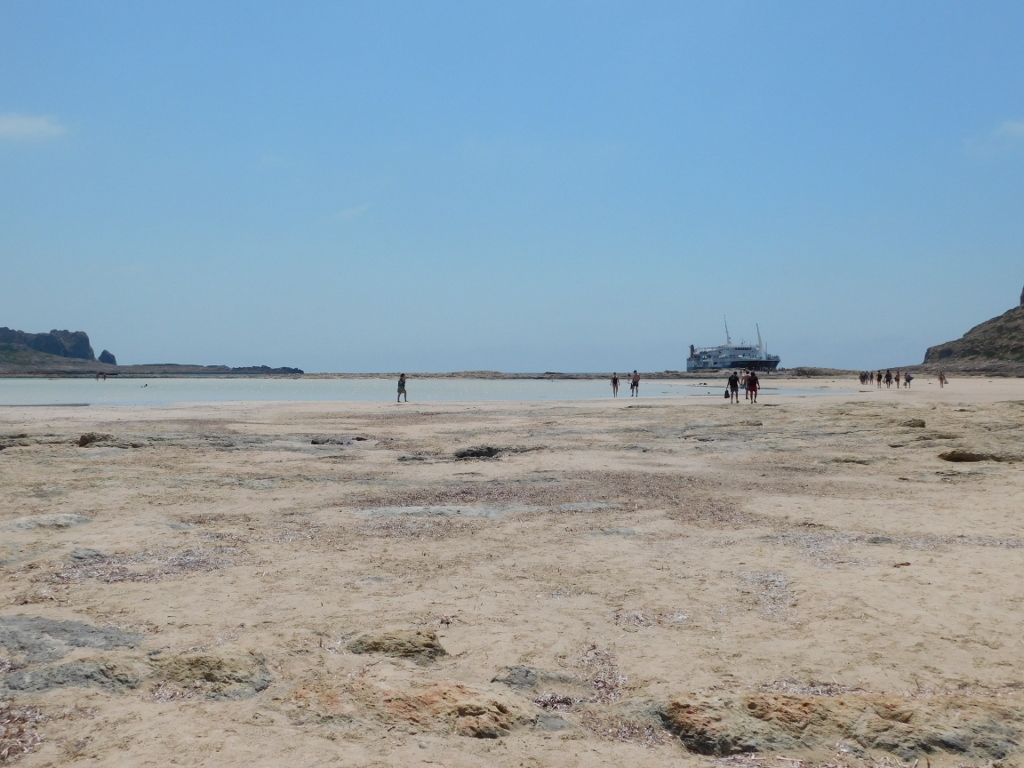 Balos Beach: walking back to the ship...
Balos Beach: walking back to the ship...
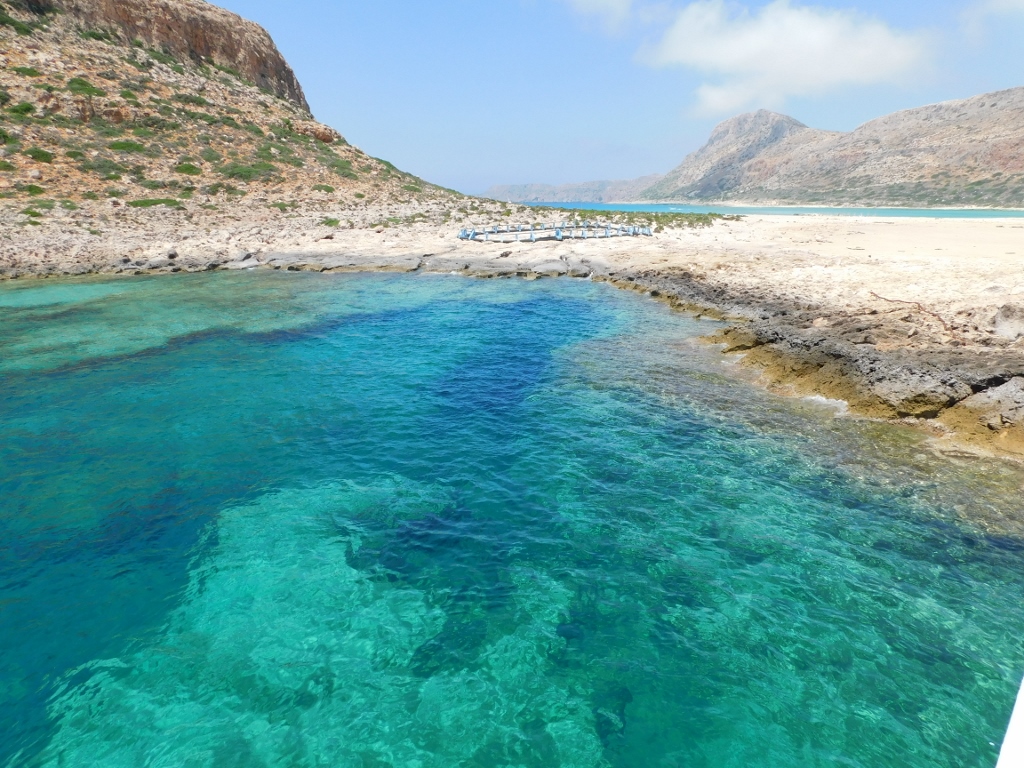 We leave from the same place where we docked
We leave from the same place where we docked
Now we proceeded to the islet of Imeri Gramvousa, meaning Tame Gramvousa. North of Cape Gramvousa there is that other islet with the more or less same name, but in order to differentiate it is called Agria Gramvousa, meaning Wild Gramvousa.
But, before I deal with the islet we sailed to, here is another view at Cape Tigani which from this direction hides its magical beauty of tropical colours, but not of tropical temperature (at least not in the second half of May).
 View at Cape Tigani
View at Cape Tigani
As for the islet of Imeri Gramvousa, in the second half of the 16th century, the Venetians built a fortress on it, right on the highest peak of the islet (88 m a.s.l.). The purpose of the fortress was to defend Crete from the Ottomans from that side and even when Crete did move into the hands of the Ottoman Turks in 1669, this fortress together with two others remained in the hands of the Venetians in order for them to be able to control the trade routes from there. Eventually, in 1691, the islet did end up as the possession of the Ottomans.
 View at the islet of Imeri Gramvousa (the fortress cannot be seen, but it is on the top of the hillock on the left-hand side)
View at the islet of Imeri Gramvousa (the fortress cannot be seen, but it is on the top of the hillock on the left-hand side)
Today, the islet is visited frequently for it holds a few interesting sites, the fortress being one of them. In the photo above, you can see the docking pier on the left-hand side, but what can be discerned all the way to the right is much more interesting.
Here is that detail a little zoomed up.
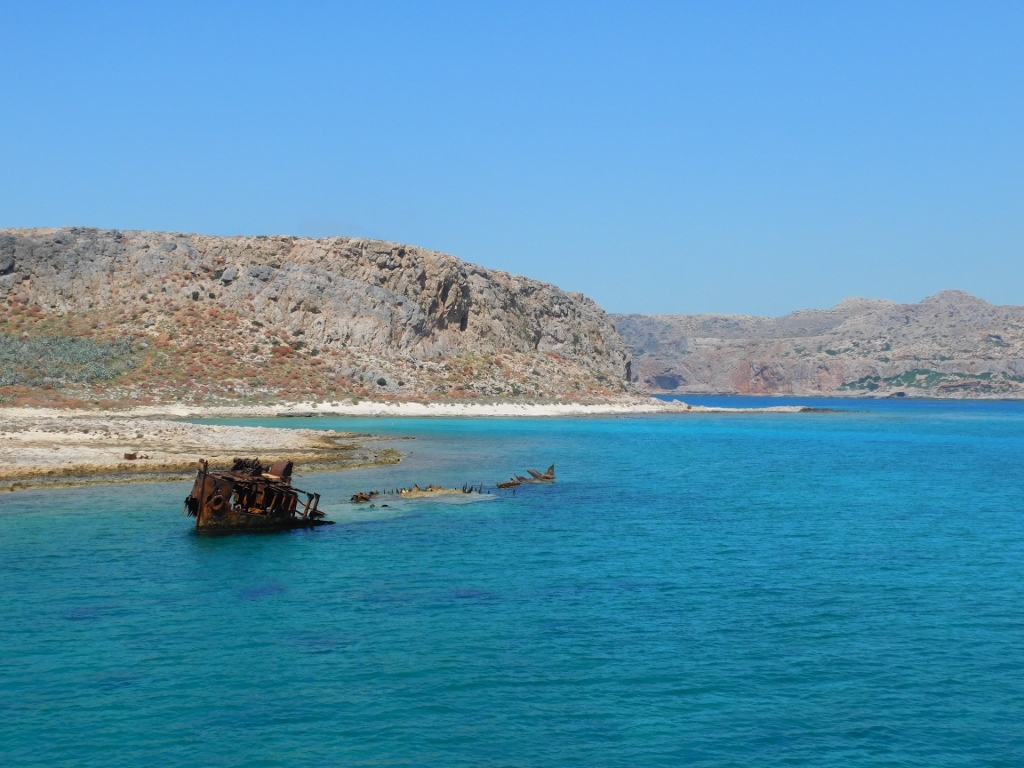 Imeri Gramvousa, a detail
Imeri Gramvousa, a detail
This is a 35-m long shipwreck that has rotted and decayed quite significantly over time. At the beginning of January 1968, the ship carrying a load from Greece to Northern Africa) had to take a shelter here, but the storm pressed on and even broke the chain of one of the two anchors. The ship then stranded with the water running into the engine room. The crew successfully evacuated to the islet and the shipwreck was left here where to this very day in represents a part of the picturesque landscape of the islet.
Needless to say, from the tourist ship, in gorgeous weather, I took photos of the other parts of the islet and thus it is possible to see the summit of the hillock with the fortress on top.
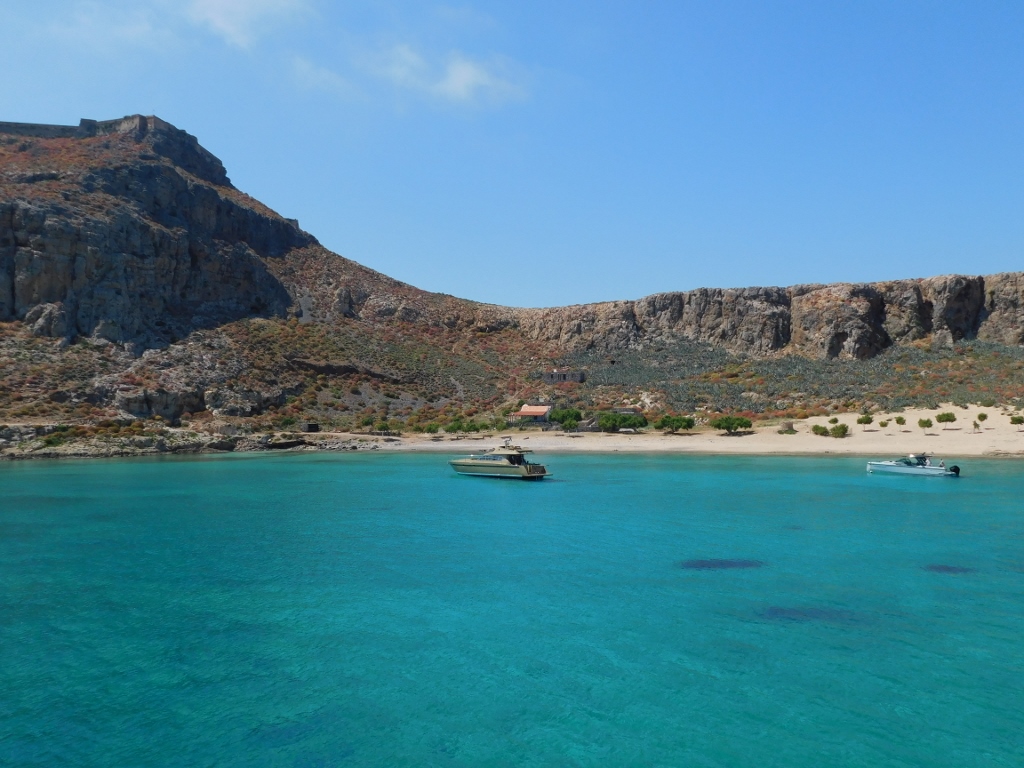 Imeri Gramvousa, a detail
Imeri Gramvousa, a detail
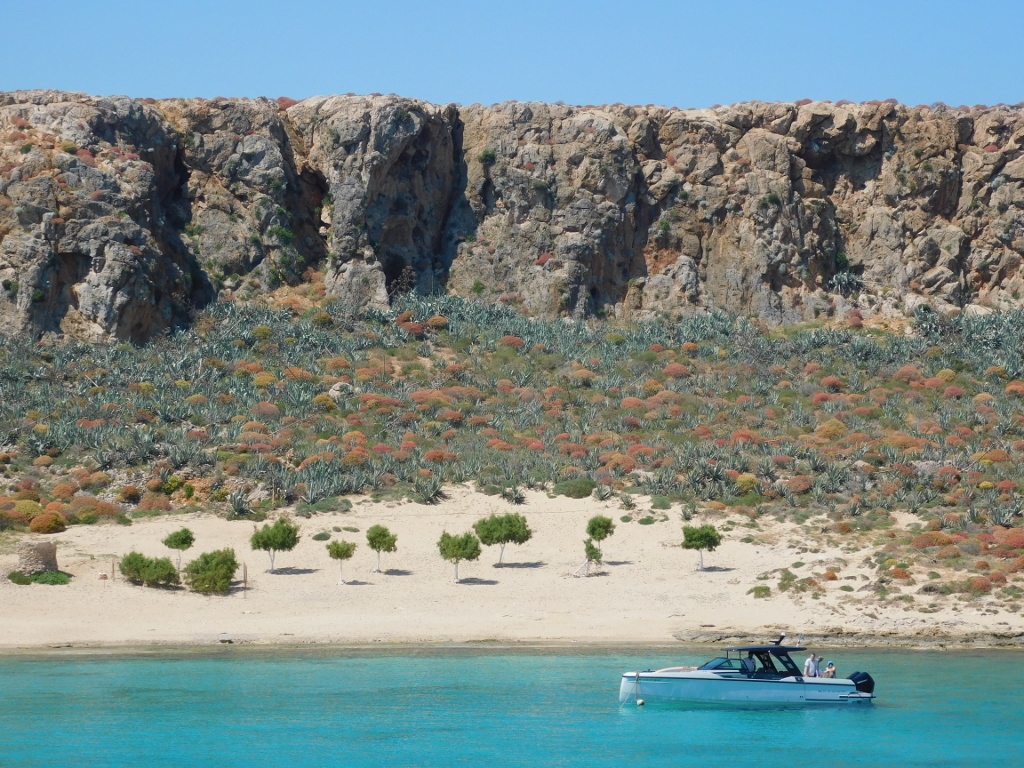 Imeri Gramvousa, a detail
Imeri Gramvousa, a detail
Then, together with the other visitors, I left the ship and headed for the shore. The bay where all of this was taking place also seemed incredibly beautiful.
 Imeri Gramvousa, a detail
Imeri Gramvousa, a detail
But, although I went to the beach, a lot of visitors continued uphill along a path in order to visit the fortress. I was so nicely relaxed that I actually felt too lazy to walk up. So much so that I did not even go to visit St. George Chapel that is close to the beach. A part of the chapel can be seen to the right in the photo below.
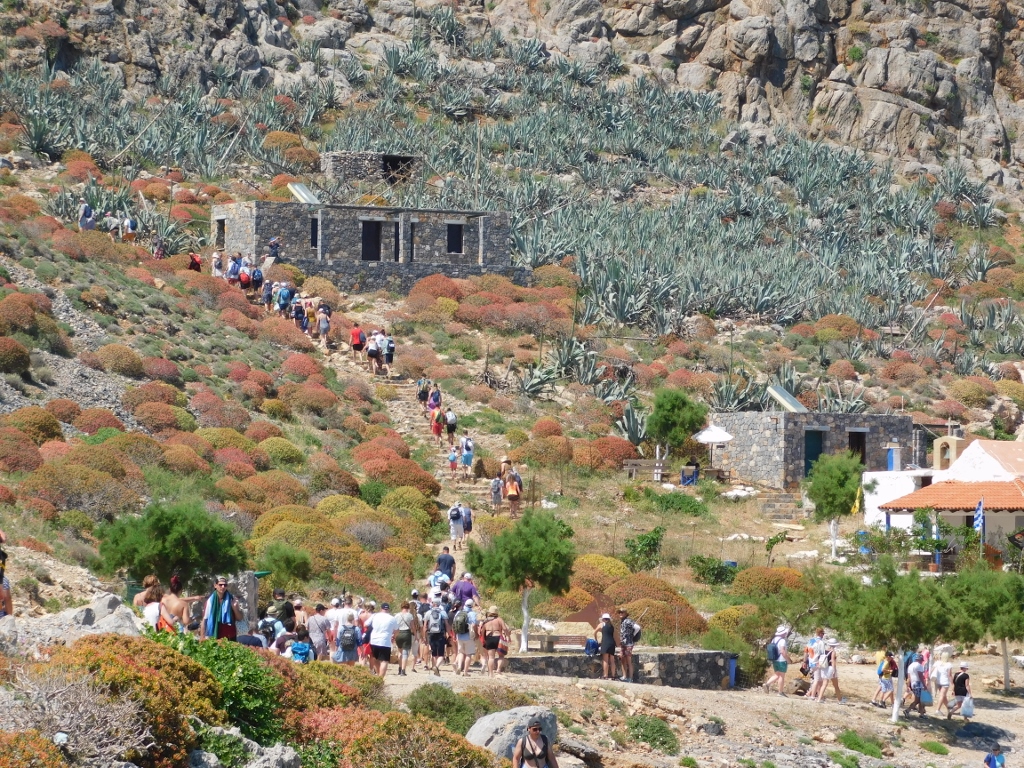 Imeri Gramvousa, a detail
Imeri Gramvousa, a detail
I was certainly not alone on the beach, but the fact is that most visitors went up to the fortress. Later I took a photo of the top of the hill with the fortress and some of the visitors could be spotted there.
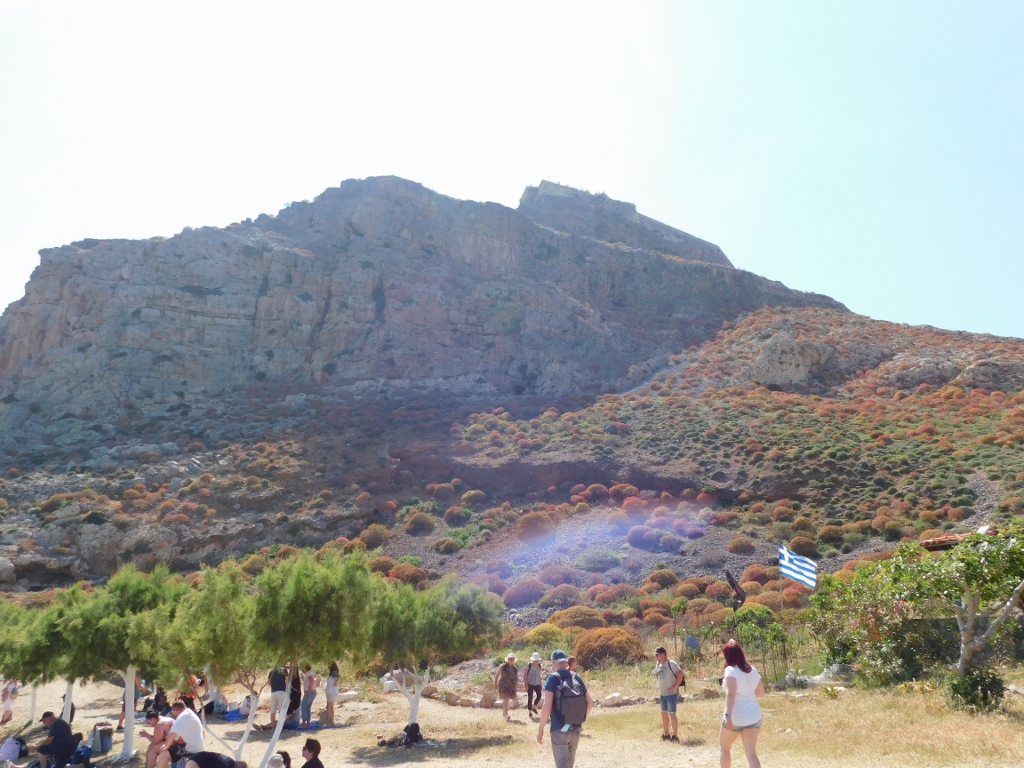 Imeri Gramvousa, a detail
Imeri Gramvousa, a detail
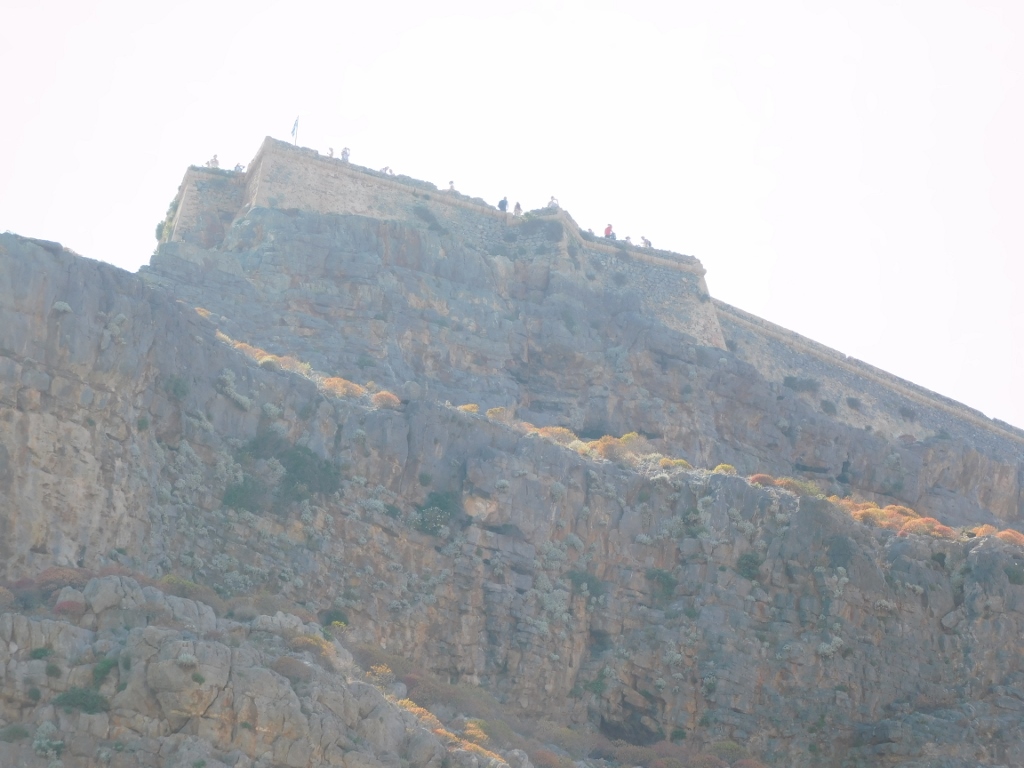 Visitors within the fortress on the top of the hillock on islet Imeri Gramvousa
Visitors within the fortress on the top of the hillock on islet Imeri Gramvousa
What I found particularly fascinating and did not concern the beach and the sea was the vegetation. Already in a couple of previous photos one could notice that the vegetation was rather picturesque here, but here is a photo with wonderful Mediterranean shrubs growing here.
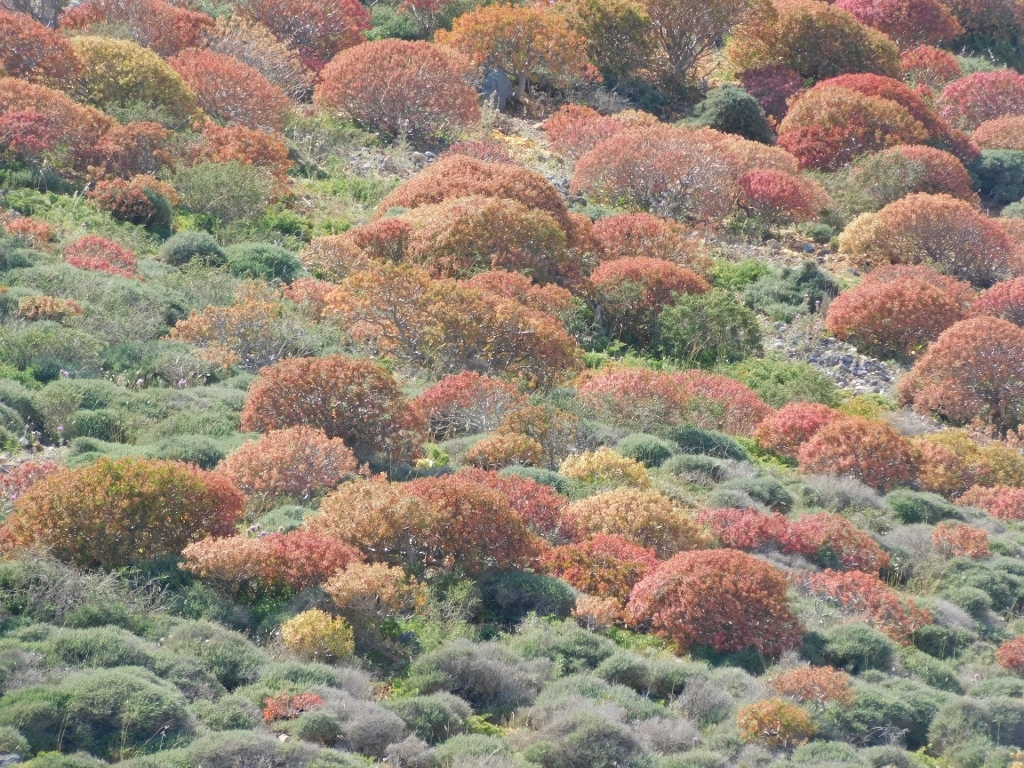 Imeri Gramvousa, a detail
Imeri Gramvousa, a detail
Still, as if by a magnet I was drawn primarily to the beach and the sea. I think that the following photos clearly show why.
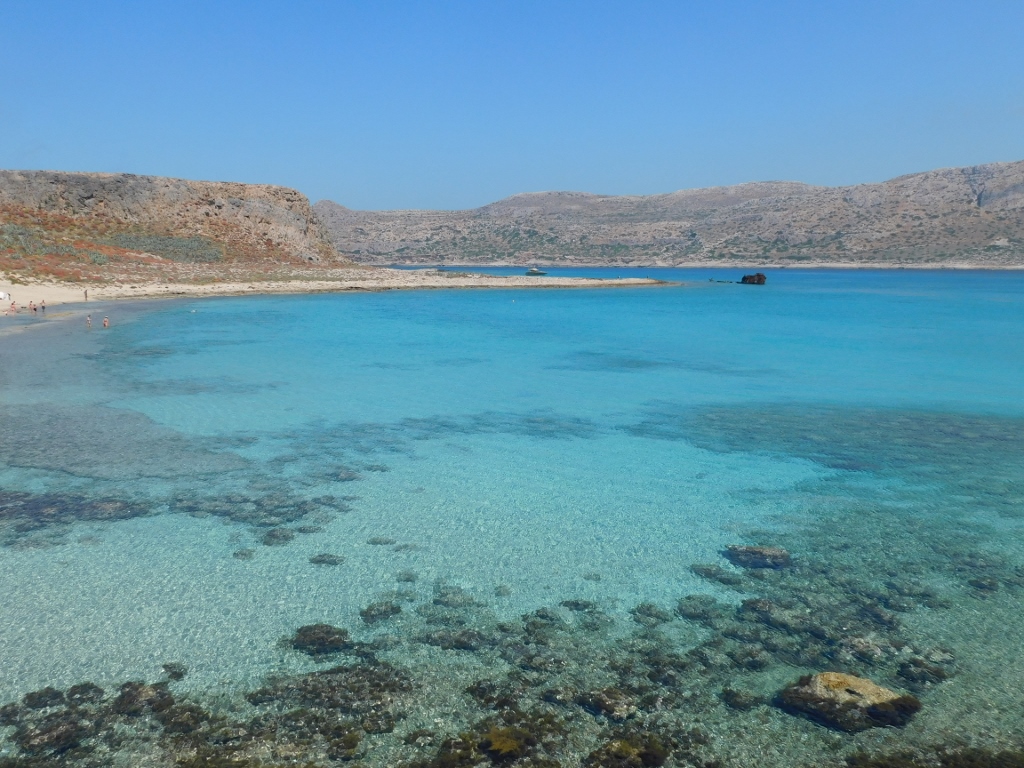 Beach on islet Imeri Gramvousa
Beach on islet Imeri Gramvousa
Unlike the Balos Beach that is made of sand, the beach here is made of pebbles and rocks, but this does not diminish its beauty in the least. Following the example of some people, I bravely ventured into the water and I even managed to swim a little, but I got out very quickly because it just felt too cold for me. I could enjoy the beauty of the landscape also from the shore where I warmed up and dried.
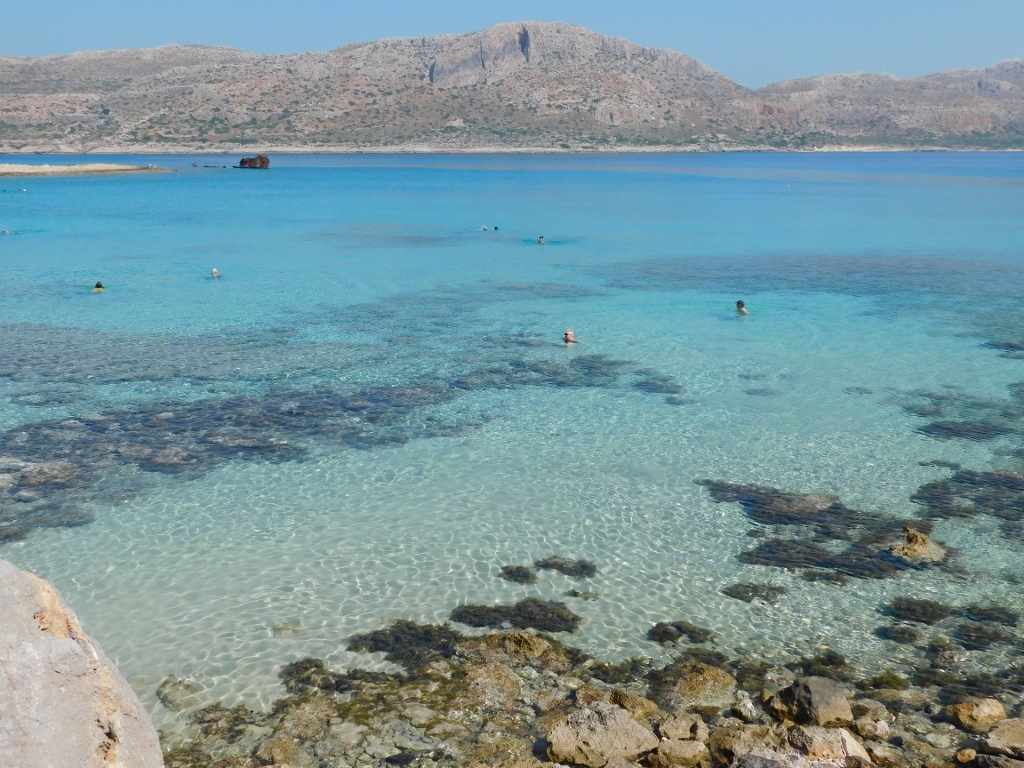 Beach on islet Imeri Gramvousa
Beach on islet Imeri Gramvousa
I used the time foreseen for the stay on the islet for enjoying the view, as well as for taking photos of some details.
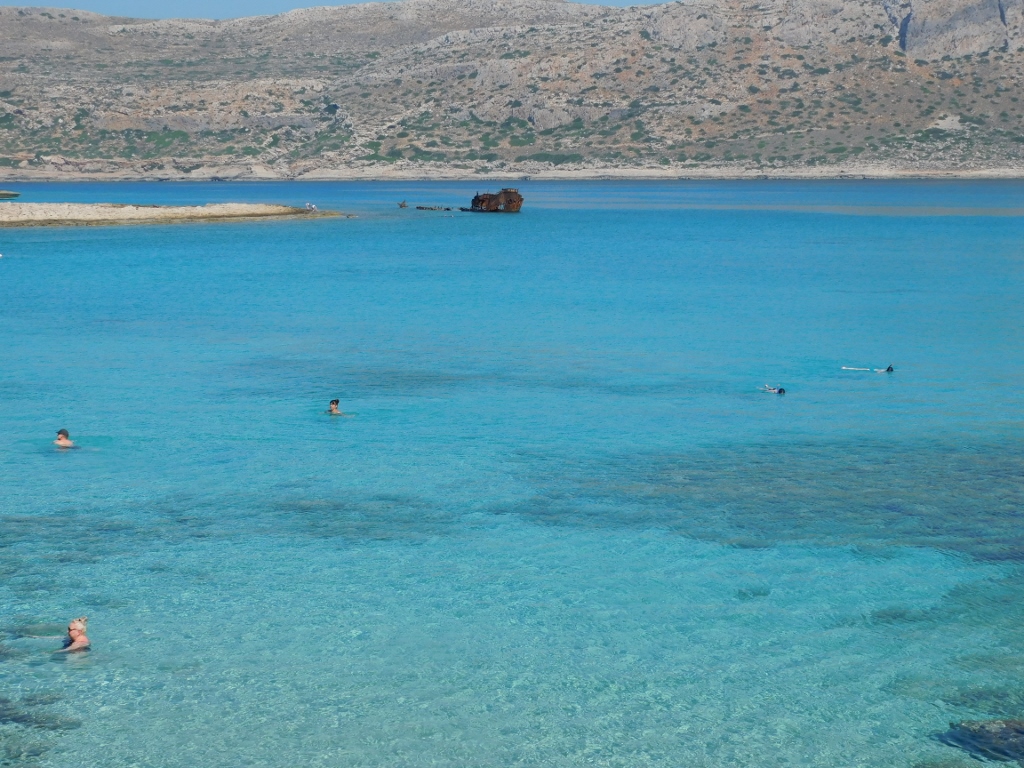 Imeri Gramvousa, a detail
Imeri Gramvousa, a detail
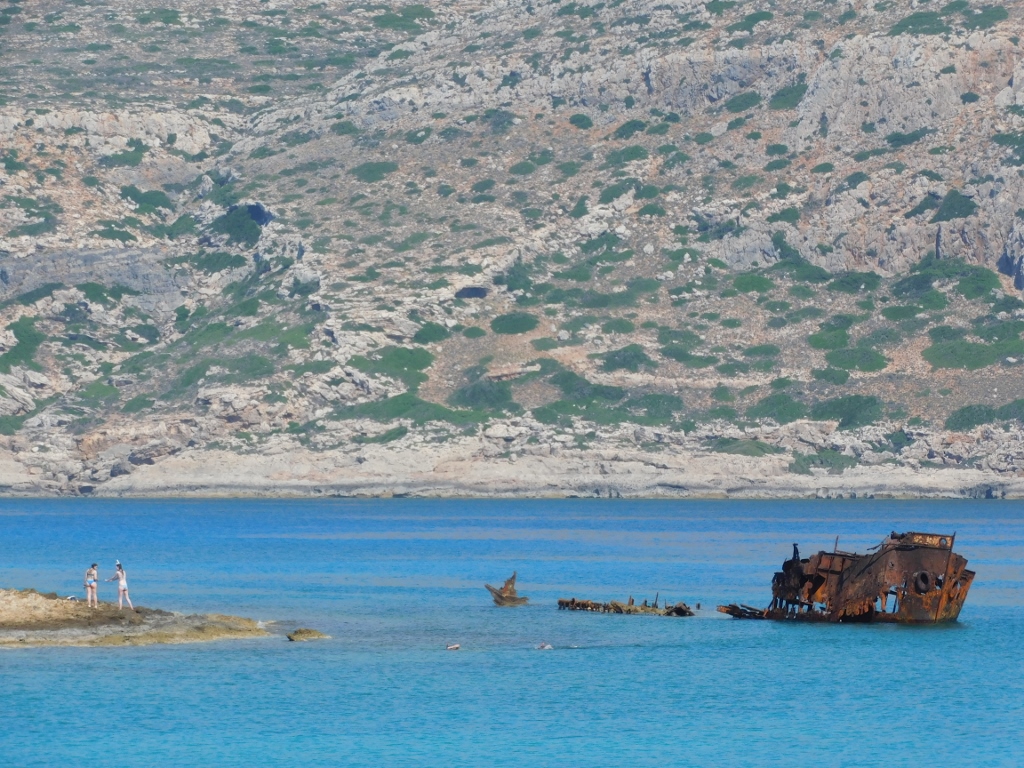 Imeri Gramvousa, a detail
Imeri Gramvousa, a detail
At the set time, the visitors returned to the vessel and now the beach was almost completely deserted, while the ship could head back to Kissamos Port.
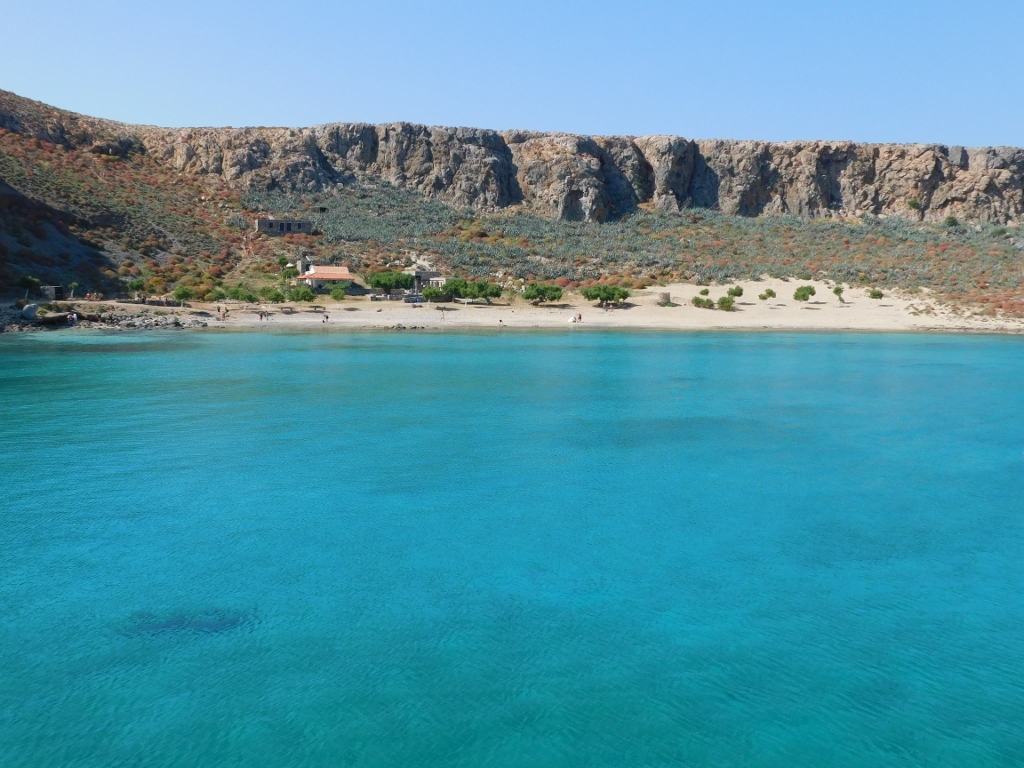 One more look at Imeri Gramvousa
One more look at Imeri Gramvousa
On the journey back I started to chat with an exceptionally pleasant couple from England and the time needed to go back to the dry land flew by.
Once back in Chania, I walked past the agency through which I had organised my trip, so I stopped by to ask them something. Namely, I planned to do some hiking the following day and meanwhile I had realised that it would be good to have trekking poles, while I had not brought mine from Belgrade. I thought that perhaps the agency had some trekking poles to rent, but as it turned out they did not. Still, it was good that I stopped by, because they told me where I could buy the poles, which I did soon after.
Then I first went to my rented flat and changed, after which I walked to the street that runs along the beach in Nea Chora in the west section of Chania that was full of restaurants.
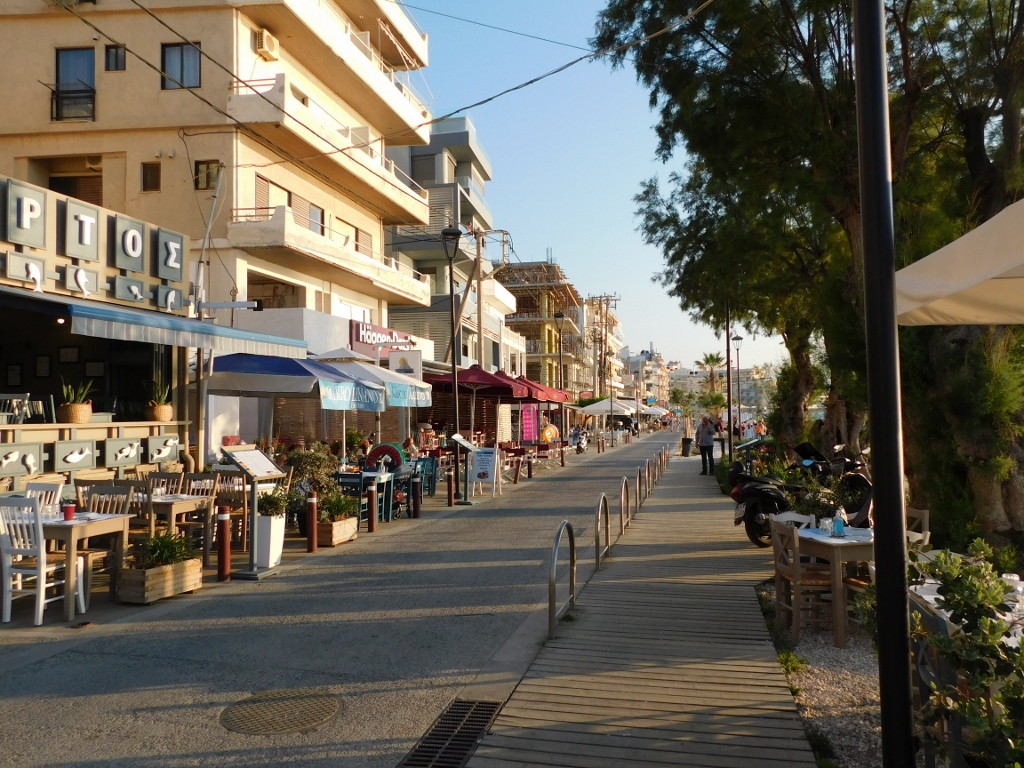 Promenade along Nea Chora Beach
Promenade along Nea Chora Beach
There is this problem, from time to time, when I don’t know where exactly I would sit, because there are so many restaurants and each one of them may seem interesting. So, I first wanted to take a seat in a restaurant that offered somewhat prettier view than the rest of them, but it was full. Well, I went to another place and it was not bad at all.
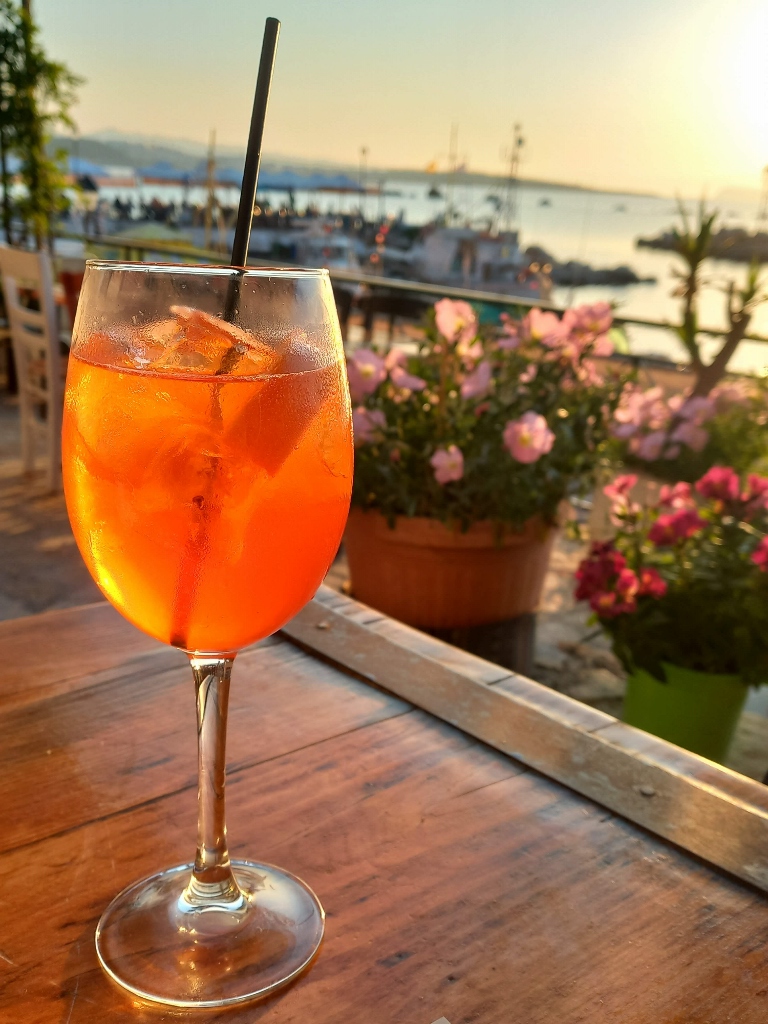 A part of the dinner at the Nea Chora Beach
A part of the dinner at the Nea Chora Beach
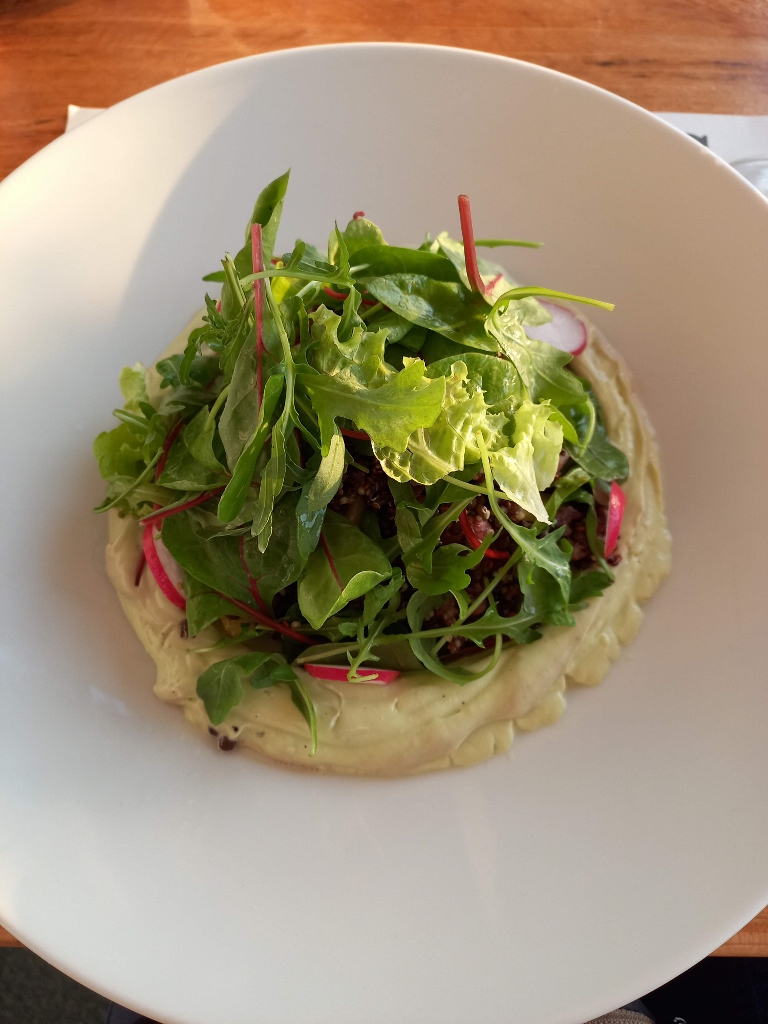 A part of the dinner at the Nea Chora Beach
A part of the dinner at the Nea Chora Beach
With my tummy pleasantly full, I returned to the rented flat, prepared my things for the following morning and went to bed. Namely, the next morning I had to get up even earlier and it was still dark when my mobile phone’s alarm went off. By the time I got ready and reached the promenade along the Old Venetian Port of Chania, the Sun was still not up, but the dawn was in full swing.
 Old Venetian Port of Chania
Old Venetian Port of Chania
On this day, I went on a trip that was almost the main reason why I wanted to come to Crete in the first place. But, I will talk about it in the next sequel of my Crete travel stories...